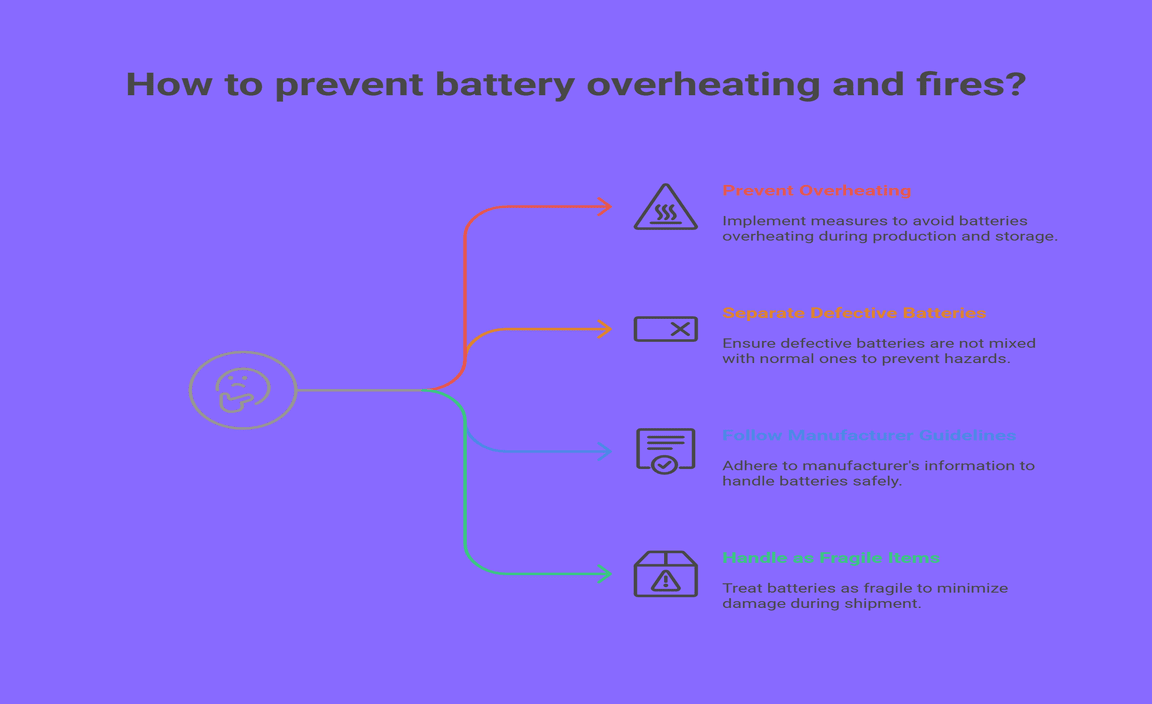Electric vehicle (EV) batteries need specific raw materials like lithium, nickel, cobalt, manganese, and graphite. Understanding these key ingredients helps explain EV battery costs, performance, and future developments.
Thinking about electric cars? You’re not alone! More and more folks are curious about EVs, and a big part of that chat is the battery. It’s the heart of the electric vehicle, and just like any heart, it’s made of something special. But what exactly goes into these powerhouses? It can sound complicated, but it’s simpler than you might think. We’re going to break down the essential raw materials that make EVs go. It’s useful information whether you’re buying an EV, curious about the tech, or just want to know what powers the future of driving. Stick around, and by the end, you’ll have a clear picture of what’s inside an EV battery.
The Heart of the EV: What Makes an Electric Car Battery Tick?
Electric vehicle (EV) batteries are more than just a box of power; they’re complex energy storage systems. They work by storing electrical energy and releasing it to power the car’s motor. This magic happens through chemical reactions inside individual battery cells. These cells are grouped together into a battery pack, which is then connected to the car’s systems. The type of battery most common in EVs today is called a lithium-ion (Li-ion) battery. These batteries are popular because they can hold a lot of energy, last a long time, and can be recharged many times.
The performance, cost, and lifespan of an EV battery are all heavily influenced by the raw materials used to build it. Think of it like baking a cake – the ingredients you choose determine how it turns out. Different combinations of materials can lead to batteries that last longer, charge faster, or offer more power. As the demand for EVs grows, so does the need for these specific resources. Understanding these materials helps us see why EV batteries have the price they do, why recycling is becoming so important, and what the future might hold for battery technology.
Key Raw Materials in EV Batteries
EV batteries are primarily made from a combination of elements, each playing a crucial role in how the battery stores and delivers energy. The most significant raw materials you’ll find are:
- Lithium
- Nickel
- Cobalt
- Manganese
- Graphite
- Aluminum
- Copper
While there are other components, these are the ones that often get the spotlight due to their impact on battery performance and cost. Let’s dive into what each of them does.
Lithium: The Energy Carrier
Lithium is arguably the most critical element in a lithium-ion battery. It’s a very light metal that’s highly reactive, which makes it perfect for storing and releasing electrical charges. In an EV battery, lithium ions move back and forth between the positive (cathode) and negative (anode) terminals during charging and discharging. This movement is how energy is stored and then released to power the car.
The supply of lithium is a major topic in the EV world. It’s primarily extracted from brines found in salt flats, especially in places like South America’s “Lithium Triangle” (Argentina, Bolivia, and Chile), and from hard rock mining in countries like Australia. Extracting lithium can be an energy-intensive process, and its availability and price directly impact the overall cost of EV batteries. Companies and researchers are always looking for more efficient and sustainable ways to source and use lithium.
Nickel: Boosting Energy Density
Nickel is another key player, especially in the cathodes of many high-performance EV batteries. Adding nickel to the cathode material (like in Nickel-Manganese-Cobalt or NMC chemistries) significantly increases the battery’s energy density. This means the battery can store more energy in the same amount of space or weight, which translates to EVs that can travel longer distances on a single charge.
The leading sources of nickel are found in countries like Indonesia, the Philippines, Russia, and Australia. The quality and form of nickel matter, and processing it to battery-grade standards is crucial. As EV range becomes more important, the demand for high-purity nickel is expected to rise, making its sustainable sourcing a growing concern.
Cobalt: The Stabilizer
Cobalt has historically been vital for stabilizing the cathode structure in lithium-ion batteries, especially in older NMC and NCA (Nickel-Cobalt-Aluminum) chemistries. It helps improve the battery’s performance and longevity by preventing the cathode from degrading too quickly during repeated charging and discharging cycles. However, cobalt is also one of the most expensive and ethically challenging materials to source, with a significant portion coming from the Democratic Republic of Congo, where concerns about mining practices persist.
Because of these concerns, there’s a strong push to reduce or eliminate cobalt from EV batteries. Many battery manufacturers are already developing and using “cobalt-free” or “low-cobalt” battery chemistries, which is a significant trend in the industry. This shift aims to make batteries more affordable and ethically sourced.
Manganese: A Cost-Effective Alternative
Manganese is often used in combination with nickel and cobalt in NMC cathodes, or increasingly in chemistries like Lithium-Manganese-Oxide (LMO) and nickel-rich, low-cobalt chemistries. Manganese helps improve the battery’s thermal stability, meaning it can operate at higher temperatures without breaking down. It’s also generally more abundant and less expensive than cobalt, making it an attractive option for reducing battery costs.
Manganese is mined in many parts of the world, including South Africa, China, and Australia. Its use helps balance performance, cost, and safety in EV battery designs. As the industry moves away from cobalt, manganese is likely to play an even bigger role in battery cathodes.
Graphite: The Anode Essential
While the cathode gets a lot of attention, the anode (the negative electrode) is equally important. In most lithium-ion batteries, graphite is the primary material used for the anode. Graphite is a form of carbon that has a layered structure, allowing lithium ions to easily intercalate (insert themselves) and deintercalate (remove themselves) between the layers. This process is fundamental to how the battery charges and discharges.
The vast majority of the world’s natural graphite comes from China. Synthetic graphite, produced through industrial processes, is also widely used and can offer higher purity. The demand for high-quality graphite for EV battery anodes is soaring. Researchers are also exploring alternative anode materials, like silicon, which could potentially store more lithium and increase battery capacity, but graphite remains the dominant material for now.
Aluminum and Copper: The Conductors
Beyond the active materials in the electrodes, aluminum and copper play vital roles as current collectors. Thin foils of copper are typically used for the anode, while aluminum foil is used for the cathode. Their job is to conduct electricity efficiently, allowing the lithium ions to flow to and from the external circuit. Without these metal foils, the battery wouldn’t be able to deliver power to the electric motor or receive it from the charger.
Both aluminum and copper are widely available metals, but their purity and form are important for battery component manufacturing. They represent a significant portion of the battery’s weight and cost, and efforts are underway to optimize their use and improve recycling processes for these materials.
How Raw Materials Affect Battery Cost and Performance
The specific mix of raw materials in an EV battery directly influences its cost, its ability to store energy (energy density), how quickly it can be charged and discharged (power density), and how long it will last (cycle life). For example:
- Higher Nickel Content: Generally means higher energy density (longer range) but can sometimes impact stability if not properly managed.
- Cobalt Use: Improves stability and longevity but significantly increases cost and raises ethical sourcing questions.
- Lithium Availability: Price fluctuations in lithium can have a substantial impact on the overall battery cost.
- Graphite Anodes: Affect charging speed and capacity.
The cost of an EV battery is a major portion of an electric vehicle’s total price. By understanding the raw materials, we can better grasp why battery prices vary and what drives innovation in battery technology. Manufacturers are constantly trying to strike a balance between performance, cost, lifespan, and the environmental impact of material sourcing.
Sourcing Challenges and Sustainability
The rapidly increasing demand for EV batteries has brought the sourcing of these raw materials into sharp focus. There are several key challenges:
- Geopolitical Factors: Many critical materials are concentrated in only a few countries. This can lead to supply chain vulnerabilities and price volatility. For instance, much of the world’s cobalt comes from a single region, as does a large portion of graphite.
- Environmental Impact: Extracting and processing these materials can have significant environmental consequences. Traditional mining can lead to habitat destruction, water pollution, and high energy consumption. For example, lithium extraction from brines can require vast amounts of water in arid regions. You can learn more about responsible mining practices from the Bureau of Land Management’s efforts to manage mineral resources.
- Ethical Concerns: As mentioned with cobalt, some mining operations are associated with human rights issues, including child labor and unsafe working conditions.
- Scalability: Meeting future demand requires significant investment in new mines, processing facilities, and extraction technologies.
Because of these challenges, the industry is heavily invested in improving sustainability. This includes:
- Developing New Battery Chemistries: Creating batteries that use less or no cobalt, or substitute other more abundant materials.
- Improving Extraction and Processing: Innovating to make mining and refining more efficient and less harmful to the environment.
- Recycling: This is a huge area of focus. Recovering valuable materials like lithium, nickel, cobalt, and copper from end-of-life EV batteries can reduce the need for new mining and create a more circular economy. Companies are developing advanced recycling technologies to efficiently extract these materials. The U.S. Department of Energy provides resources on advancements in EV battery recycling.
- Ethical Sourcing Initiatives: Working to ensure that materials are sourced responsibly and ethically, often through industry-wide standards and certifications.
The Future of EV Battery Materials
The world of EV batteries is constantly evolving. Researchers and engineers are working on several fronts to improve battery technology and address the challenges associated with raw materials:
- Solid-State Batteries: These batteries use a solid electrolyte instead of the liquid or gel electrolyte found in current lithium-ion batteries. They promise higher energy density, faster charging, and improved safety. The materials used in solid-state batteries might differ, potentially reducing reliance on some of the current critical elements.
- Advanced Cathode Materials: A lot of research is going into developing new cathode materials. This includes increasing the nickel content further, but also looking at novel materials like Lithium Iron Phosphate (LFP), which is cobalt-free and iron-based. LFP batteries are becoming very popular for their lower cost and better durability, though they typically have a lower energy density.
- Silicon Anodes: As mentioned earlier, silicon can store significantly more lithium than graphite. While pure silicon anodes have issues with swelling, incorporating silicon into graphite anodes or developing new silicon-based structures could drastically increase battery capacity.
- Beyond Lithium-Ion: While not yet mainstream for cars, researchers are exploring other battery chemistries like sodium-ion batteries, which use more abundant and cheaper sodium instead of lithium, or lithium-sulfur batteries, which could offer very high energy density.
These advancements are driven by the need to make EVs more affordable, increase their range, improve charging times, and ensure the sustainability of the entire battery lifecycle. The materials used in these future batteries might be different, but the goal remains the same: efficient, safe, and sustainable energy storage.
Recycling EV Batteries: Closing the Loop
Recycling EV batteries is not just a good idea; it’s becoming a necessity. As the first generations of EVs reach their end-of-life, handling their batteries responsibly is crucial. Advanced recycling processes are making it more feasible and economical to recover valuable materials from these complex packs.
The recycling process typically involves several steps:
- Collection and Disassembly: Batteries are collected and carefully disassembled, often by specialized facilities. Safety is paramount here, as batteries can still hold a charge.
- Shredding and Separation: The battery components, including active materials and metals, are shredded. Different methods, like pyrometallurgy (using heat) or hydrometallurgy (using chemicals), are then used to separate and recover the valuable metals.
- Material Recovery: Key materials like lithium, nickel, cobalt, manganese, copper, and aluminum are extracted in a purified form, ready to be used in manufacturing new batteries or other products.
Recycling helps reduce the environmental impact of battery production by decreasing the need for new mining. It also makes the EV industry more circular, meaning resources are reused rather than discarded. Companies like Redwood Materials and Li-Cycle are at the forefront of developing these advanced recycling solutions. This focus on recovery is essential for the long-term sustainability of electric transportation.
FAQs About EV Battery Raw Materials
What is the most expensive raw material in an EV battery?
Historically, cobalt and nickel have been among the most expensive materials. However, fluctuations in market prices mean that lithium can also be a significant cost driver, especially when demand is high. The specific battery chemistry also plays a role.
Are there enough raw materials for all the EVs we want to build?
This is a complex question. While there are significant reserves of most materials, the challenge lies in the speed and efficiency of extraction, processing, and responsible sourcing to meet the rapidly growing global demand. Investment in new mines and efficient technologies is crucial.
What are the main environmental concerns with mining for EV battery materials?
Concerns include water usage (especially for lithium brine extraction), energy consumption for mining and processing, land disturbance, potential pollution of soil and water, and greenhouse gas emissions. Responsible mining practices and recycling aim to mitigate these impacts.
Can you tell me about the types of lithium-ion batteries and their materials?
Yes! The most common types are NMC (Nickel Manganese Cobalt) and NCA (Nickel Cobalt Aluminum), which offer high energy density. Lithium Iron Phosphate (LFP) batteries are cobalt-free and known for their longevity and safety, though with slightly lower energy density. Each type uses a different ratio of these key materials.
Is it true that electric car batteries can be reused after they’re no longer good enough for cars?
Absolutely! This is called “second-life” use. Batteries that no longer have enough capacity for a car can still be perfectly good for other applications, like storing energy for homes or businesses. After their second life, they are then sent for recycling to recover their raw materials.
What’s being done to make EV battery materials more sustainable?
Several things are happening: developing new battery chemistries that use fewer or no critical materials (like cobalt), improving mining and processing techniques for lower environmental impact, investing heavily in battery recycling to recover valuable metals, and focusing on ethical sourcing practices.
How do raw materials affect the weight of an EV battery?
The active materials like lithium, nickel, and cobalt make up a significant portion of the battery’s core components. The amount of metal foils (copper and aluminum) used as current collectors also adds to the weight. Efforts to improve energy density often aim to store more power using less material overall, helping to reduce battery weight.
Conclusion: Understanding What Powers Your Drive
So, there you have it – a look under the hood, or rather, within the battery, of an electric vehicle. We’ve explored the essential raw materials – lithium, nickel, cobalt, manganese, graphite, copper, and aluminum – that make these batteries work. Each plays a specific role, influencing everything from how far your EV can travel on a charge to its overall cost and lifespan.
The journey from raw material extraction to a finished battery pack is complex, and the industry is continually innovating to make it more efficient, cost-effective, and sustainable. From developing new battery chemistries that reduce reliance on scarce or ethically challenging materials, to creating robust recycling programs that close the loop, the focus is on building a responsible future for EV power. Understanding these materials isn’t just for engineers; it helps all of us appreciate the technology, its challenges, and the exciting advancements that are making electric vehicles a more practical and environmentally friendly choice for everyone. As battery technology continues to evolve, so will the materials that power our planet’s future transportation.




